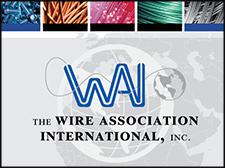How to Set Up a High-Efficiency SMT Production Line in 2025: Key Tips for Modern Electronics Makers
As global demand for high-performance electronics grows, setting up an efficient SMT line in 2025 is crucial. Learn how to streamline your process, select the right equipment, and stay ahead of industry trends. Read the full guide here.
In 2025, the demand for smarter, faster, and more energy-efficient electronics is skyrocketing—fueling an urgent need for manufacturers to optimize their surface mount technology (SMT) production lines. Whether you're launching a new SMT facility or upgrading your existing process, having a strategic roadmap can make or break your productivity and profitability.
Why SMT Efficiency Matters More Than Ever
Today's electronics—from 5G devices to automotive control modules—require highly precise and scalable production. With global competition rising, any delay, defect, or downtime in your SMT line directly impacts your bottom line.
An efficient SMT line doesn't just improve output—it ensures better quality control, reduces component waste, and supports flexible production runs for both low and high-volume demand.
So how do you make it happen in 2025?
1. Define Your Product Mix and Production Goals
Before you purchase any equipment, it's essential to clarify what you're building—and how fast you want to build it. Are you assembling compact PCBs for wearables or large, high-power boards for EV applications? Do you expect high-mix, low-volume runs or steady mass production?
Your SMT line configuration should reflect your unique goals. For example, high-mix production benefits from modular equipment and quick-change feeders, while mass production might prioritize speed, automatic component loading, and closed-loop inspection systems.
2. Choose Equipment That's Smart, Scalable, and Serviceable
Modern SMT lines are no longer just about hardware—they're about intelligent automation. From pick-and-place machines with AI-based component recognition to SPI and AOI systems using deep learning for defect detection, choosing equipment with smart capabilities ensures long-term performance and adaptability.
Make sure to consider:
Solder paste printers with precise alignment and repeatability.
High-speed pick-and-place machines with flexible feeders and camera systems.
Reflow ovens with tight thermal control and energy-saving modes.
Inline inspection systems for real-time process feedback.
One of the most comprehensive guides we've seen on configuring your SMT line in 2025 comes from this article, which outlines essential equipment, layout planning, and productivity tips.
3. Layout Planning: Optimize Flow, Minimize Downtime
Even the best machines can underperform in a poorly designed layout. To ensure smooth workflow:
Design your line for left-to-right flow.
Leave space for manual inspection or repair loops.
Create easy access paths for material loading and unloading.
Use conveyor systems to link each station seamlessly.
Proper line balancing is key. Bottlenecks often occur at paste printing or inspection stages—monitor those areas closely to tweak cycle times or add backup modules.
4. Embrace Data and Connectivity
Industry 4.0 isn't a buzzword—it's now standard. Connect your SMT equipment to MES (Manufacturing Execution Systems) and enable data logging, traceability, and predictive maintenance.
This data-driven approach helps:
Identify performance drifts.
Optimize production scheduling.
Reduce unplanned downtime.
5. Train Your Team and Establish SOPs
A high-tech SMT line still depends on human skill. Train your operators on machine maintenance, software usage, and quality standards. Establish clear standard operating procedures (SOPs) and enforce continuous improvement through regular audits.
Final Thoughts
Launching or upgrading an SMT production line in 2025 doesn't need to be overwhelming—but it must be strategic. From smart equipment choices to data-driven optimization, the future of electronics manufacturing belongs to those who think ahead.
Want to dive deeper? Check out the full 2025 SMT line setup guide at:
👉 https://www.smtmachine.eu/how-to-set-up-an-efficient-smt-production-line-in-2025
By implementing these principles, manufacturers can gain a competitive edge—not just this year, but for years to come.
Featured Product

